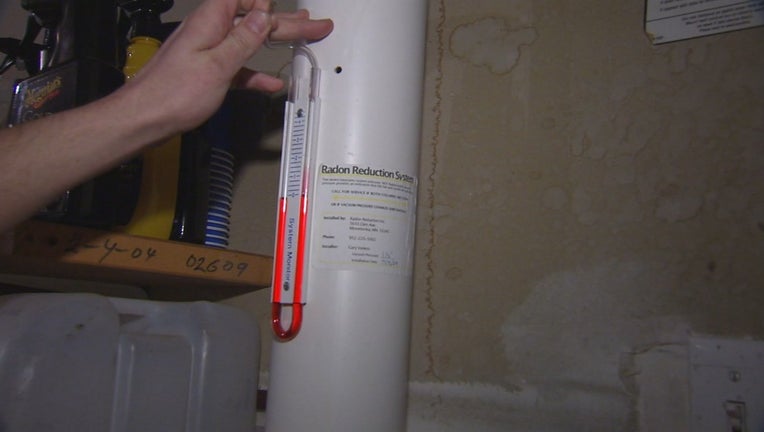Data shows Minnesota income disparities extend to radon mitigation

New data from the Minnesota Department of Health shows a link between income disparities and radon mitigation.
(FOX 9) - New data from the Department of Health shows the many income disparities we have in Minnesota now extends to radon mitigation.
The data shows the households that are fixing their homes to reduce their lung cancer risk tend to exist in more affluent communities.

Data shows Minnesota income disparities extend to radon mitigation
New data from the Department of Health shows the many income disparities we have in Minnesota now extends to radon mitigation.
Virtually every home in Minnesota is at some kind of risk for radon. The odorless and colorless gas percolates through our soil and can get trapped in our homes, and too often, new data shows households in low income areas are less likely to install radon removal systems.
“What we’re finding similar with what we saw last year with testing rates in areas with lower income and rental, there is less testing, and areas with lower income, more rental, there is less mitigation meaning homes getting fixed for radon,” said Daniel Tranter, Indoor Air Supervisor with the Minnesota Department of Health.
The data maps from the Twin Cities metro shows the households conducting the most radon tests; the brown areas on the map are in the more affluent southwest metro.
The same holds for the most homes installing mitigation systems; the areas in blue are also mostly in the southwest metro.
Data shows that in those areas where there is lowest radon mitigation, household poverty levels are three times higher, which makes it a health equity issue - especially when it comes to the risk of developing lung cancer.
“There have been many studies across the country and across the world that have shown people living or working in high radon environments are at a much greater risk at developing lung cancer,” Tranter said. “So, this has become a disparity problem in our state, and it is another health inequity that we see in Minnesota.”
Tranter said that, in general, people are not testing enough. Most cities and counties offer a free or reduced price radon testing kit.
You can also visit mn.radon.com and order one.

